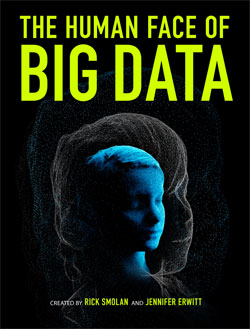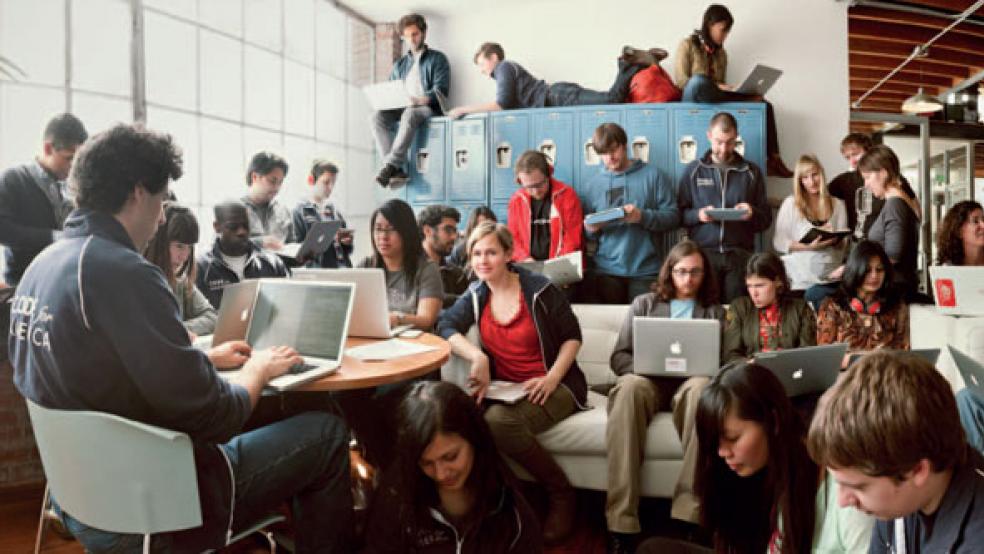If you think Mitt Romney’s $10K bet from over a year ago was a blip on the political screen, you haven’t factored in the ability of today’s technology to analyze massive amounts of data in a predictive way. This is ‘Big Data,’ and it’s changing the course of politics.
In a knowledge-driven world in which the social media response to televised political debates can be captured, analyzed, and transmitted almost immediately, that ill-advised bet that Romney tried to make with Rick Perry during a nationally televised GOP debate perfectly illustrates the major new “disruption” taking place in politics and media.
Deb Roy of Bluefin Labs, an analytics firm that’s become a player in the Big Data movement, told The Fiscal Times, “The way you’ll win and lose a campaign in a democracy – the way you will entertain and the way you will sell – all of this is changing. The biggest medium in the world – television – is now intersecting with the fastest medium in the world – social media – to change the face of politics.”
Roy’s company, Bluefin, recently profiled in The Human Face of Big Data by Rick Smolan, is gaining insight into how televised events – including serious political debates – play out among many millions of viewers. These viewers, with their laptops, tablets or iPhones at the ready, are actively, eagerly and almost instantly sharing what they think.
RELATED: How You’re Shaping the Future Through Big Data
So, just “seconds after a show or advertisement airs, data pours into Bluefin’s servers,” says Smolan. “Using technology first designed to track language development in children, the company relates this social media chatter to millions of television and advertisements on about 120 networks.”
Roy, a cognitive science researcher formerly of MIT, says, “When we looked at all the moments that comprised that two-hour GOP debate in 2011, we knew virtually right after the debate ended that the most talked-about moment was Romney’s $10K bet. We looked at who was talking about it and what they were saying – and we saw very clear patterns.”
These clear patterns should have set off huge alarm bells within the Romney camp, had they been listening or paying attention – or been willing to change the slippery slope they were on.
Certain key segments of the electorate, says Roy – women, namely – “were responding negatively to that $10K bet. That did provide a kind of roadmap, not just for how Romney might have fine-tuned his future comments, but also for how he might have targeted particular groups for follow-up in a very active way in order to counteract the damage that was done.”
The references to the $10K bet reverberated for days – weeks – after the debate was over, so the conversation was long extended beyond that fleeting moment. “That’s a key factor about social media,” says Roy. “It pushes and expands the conversation far beyond the mass media event.”
Bill Powers, a journalist who created the Crowdwire blog for Bluefin to look at the 2012 election through the data lens – much as Nate Silver did for The New York Times by examining polling for predictive outcomes – says that “when we tracked women’s responses to the election, we found over and over again there were signs women were responding negatively to certain Romney moves. For example, during that period when both the 47 percent video and Benghazi were in the news, women were talking a lot more about the 47 percent comment and economic issues generally – and not so much about Benghazi. Men were the reverse. Since women were key voters in this election, this was very telling.”
Major corporations, advertisers, political groups and others find the work at Bluefin Labs promising – to say the least. “The firm can deliver near-instant insights about whatever is on the air: audience reactions, favorite brands, demographics, even where ads perform best,” says Smolan. “For broadcasters and advertisers, it’s made a one-way megaphone into a two-way channel, and companies from Kraft to NBC Universal are taking notice. Now, if a campaign (or one specific commercial in that campaign) isn’t connecting with viewers, the advertiser has the information to make adjustments in near-real time.”
“The election conversation is migrating to the place where TV and social media intersect, and it’s changing how candidates sell themselves and how voters vote,” says journalist Powers.
Increasingly, Americans live in a two-screen world – with tremendous ramifications. “More and more, there’s a rich and multifaceted set of connect points that are emerging as people increasingly form this habit,” says Roy. “It’s crossed the threshold into mainstream behavior.It’s having a smart phone or tablet out while you're watching TV and publicly expressing your opinions as you're watching – sometimes called social TV. Those public expressions then become a complimentary form of media, which can drive opinion and drive reaction among millions of people.”

Powers adds that there were two aspects to the role of Big Data in the 2012 election. “One was applying new techniques to data that’s been sitting there a long time, such as polls. Nate Silver did this, and it was a whole new way of using polls to make forecasts. At Bluefin, we focused on looking at the new data that emerged – the social media conversation – in response to mostly televised events. And we found it to be an incredibly rich trove in terms of what voters cared about, what it was that candidates might say that people responded to, and where things were heading.”
Roy adds that it’s quite widely understood that the Obama campaign in 2008 “not only activated the grassroots activities, but also used social media for a micro-targeting of their messenging. And that certainly ratcheted up in the 2012 election. Both parties did it.”
He says that if he were to predict what’s going to happen four years from now, “absolutely both campaigns will not just be picking up megaphones and blasting out their messages – they’ll be speaking quietly in a very targeted way. And they will listen to the response in real time.”
With massive data sets available to them because of the pipeline now in place, “they won’t just be reactionary, but will understand systematic patterns. And if they see that certain voter segments are misreading or misinterpreting what they’re saying, you can bet they’re going to change what they’re saying almost immediately. That sort of cycle – it’s a new kind of phenomenon. It’s literally a conversation at scale – at the intersection of mass media and micromedia.”
This is the fourth in a series of articles about the ability of Big Data to change lives, economies, governments and much more, as captured by Rick Smolan and Jennifer Erwitt in The Human Face of Big Data. Read more about their project here.





